STRAIGHT FROM THE TRADING FLOOR
by Michael Reinking, CFA & Eric Criscuolo
Published on 12/19/25
DOW 48,135 (+183), S&P 500 6,835 (+60), Russell 2000 2,529 (+22), NYSE FANG+ 15,881 (+188), ICE Brent Crude $60.54/barrel (+$0.72), Gold $4,369/oz (+$5), Bitcoin ~88.0k (+2416)
"'Twas the week before Christmas and all through the Market
Every trader was screening for one last 10x target
The AI was running in the data center at full bore
In the hopes that a new Fed Chair would cut rates even more
The hedge funds were looking at their books with cheer
But praying a Trump tweet wouldn’t blow up their year
When out in commodities, gold took off in a run
Only for Silver to say you think that’s cool? Watch this son.
As the crypto investments were stuck in the mud
Down even more, crude oil came with a thud
However, A look at the charts with a long-term view
Came a realization that ups and downs are nothing new
As we close out this year and look forward to next
Merry Christmas to all. May next year’s returns be your best yet."
-Probably not Clement Clarke Moore
Quick programming note: Beginning next week and until the New Year, we'll be sending out our daily "Mid-Day" email in the morning, around the Open.
The last few weeks of the year are a special time in the markets. Holiday-shortened work weeks, trading desks on vacation, year-end tax loss selling and portfolio window-dressing are among the dynamics that converge at this time, often playing a role in inducing the fabled Santa Claus rally. We can add a Triple Witching and Index rebalance to top this week off, like a silk hat on a snowman.
Before traders and investors could put a bow on 2025, the overhang of the last Federal Reserve meeting of the year had to be addressed. That was accomplished last week, and it helped set the path to the end of the year and position things for beginning of 2026- at least until everything gets tossed around with a new Fed chair. The Fed cut rates as expected and Doves got some stocking stuffers when Chair Powell wasn’t as hawkish as he could have been while kick-starting a new asset purchase program to help stabilize bank reserves. Equities rallied post-meeting and the day after, but sold off on Friday as the S&P fell 1% and the Russell 1.5%. For the week, the S&P 500 fell 0.6%, but the equal-weight index was the mirror image, gaining 0.7% while the Russell gained over 1% and reached an all-time high. A look under the hood showed growth and techy Mega Cap names sold-off, exemplified by post-earnings weakness in Oracle and Broadcom. Meanwhile sectors like Materials, Financials and the small caps easily outperformed. Since the Fed cut, the 2y yield is down ~6bp, but the 10y is flat and the 30y is up 6bp, steepening the treasury curve as future debt issuance, central bank independence, growth outlooks and inflation paths slam into each other.
With the Fed out of the way, we turned to the "return" of key economic data. This week it was the CPI. We'll talk more about it below, but while it technically registered a significant decline, the numbers are being highly discounted, in part because there were barely any numbers in the report. Collection issues from the shutdown made a mess of things. With investors taking that with large clump of salt, we moved to the big options expiration and index rebalances. Those helped put nice, round numbers in play. The S&P couldn't get above 6900 last week. This week started with a move towards 6800, then a break below it, along with the 20 and 50d ma on Wednesday that took us close to 6700. The growing scrutiny (concern?) around AI economics emerged again after news that Blue Owl was pulling out of a financing for a new huge data center. However Micron rode to the rescue after it reported blowout earnings. OpenAI added its support with news that it was in talks to raise potentially $100B at a ~$800B valuation. That helped ease growing concerns of how the company would pay for all of its commitments. However, if the participating investors turn out to be the same platoon that's led the charge into all the other huge AI investments, the Bears taking issue with revenue and investment circularity could roar again. The S&P reclaimed the 20 and 50d while getting back above 6800. The market-weight index finished slightly positive, while the equal-weight was down modestly. Small caps flipped from last week as the Russell finished down 1% despite a rally on Friday. It spent the last half of the week skimming along its 20d ma. Overall, equities closed with a solid performance on Friday's opex, which saw about three billion shares trade in the closing auction.
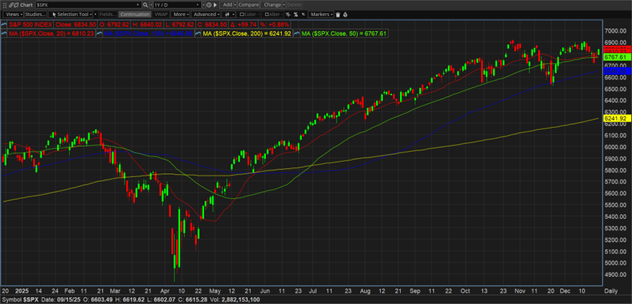
An in-depth year-in-review is beyond the scope of this note. But for a quick summary, the S&P is up about 16% this year. That’s on top of gains of more than 20% the prior two years. The record high is about 1% above us. The Russell 2000 is lagging slightly, but up a solid 13%, and the S&P equal-weight index is up about 10%.
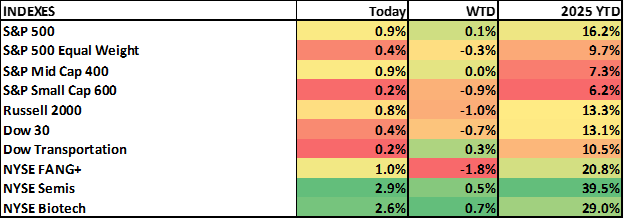
Sectors/Factors
Fittingly as we approach Christmas, Consumer Discretionary was the best performing sector this week, led by the Travel and Leisure group with a big assist from Carnival’s earnings. Homebuilders however moved lower on tepid earnings. Healthcare was another leader with biopharma mostly higher while Med Tech and managed care traded mixed. On Friday nine biopharma companies agreed to lower prices in exchange for a three year exemption from pharma tariffs. Materials was also higher. Mining names (especially lithium) rose as metals continued their run higher, though steel names were mixed after a couple of earnings reports. On the other hand, Energy was down about 3% with oil trading lower amid supply and Ukraine overhangs. Consumer Staples lagged on weakness in beverage names, mixed performance from the giant retailers, and a sharp decline for Lamb Weston after earnings showed a decline in price/mix, partially due to customers trading down to lower cost options. Tech needed a sharp gain on Friday, led by semis, to get into the green.

Global Markets - It was a mixed week with Asian markets moving lower primarily due to AI concerns and heavy tech exposure. On the flipside, European indices moved higher.
- Asia
- Japan - The Nikkei fell >2% this week with particular weakness in tech. The Bank of Japan hiked rates overnight by 25bps as expected. It said rates would continue to move higher but didn’t provide guidance as to timing with Governor Ueda saying, “The pace at which we adjust our rate will depend on the state of the economy and prices.” This put some upward pressure on global yields today. The 10yr JGB was up 6bps breaking above 2%. The Yen is falling >1% trading ~157.30 just below recent lows. Earlier Japan’s Finance Minister Katayama said he was deeply concerned about the recent FX moves and said they will take appropriate action against excessive FX moves. This caused a brief rally but that quickly reversed.
- China/Hong Kong - Trading was mixed with the Shanghai Composite ending the week flat though the Hang Seng closed lower. Economic data disappointed with retail sales and industrial production both coming in below expectations. Next week is the National People’s Congress
- Europe - Much of the outperformance was driven by the fact that the region has less tech exposure. Banks, utilities, healthcare and materials companies led to the upside. Germany underperformed with weakness in autos and other industrials. The ECB left rates unchanged this week as widely expected. The central increased its 2026 GDP and inflation forecast by 0.2% to 1.4%, while the core inflation was projected at 2.2% up from its previous estimate of 1.9%. ECB President Lagarde suggested policy was in a good place and that the central bank will be data dependent going forward. It was a slightly hawkish update but most had already expected the central bank to remain on hold for the foreseeable future.
- UK - The UK outperformed this week with strength in banks, miners and utilities. This week’s economic data was mixed with an increase in unemployment and weak retail sales. PMIs improved modestly while inflation came in below expectations. The Bank of England cut rates by 25bps to 3.75% in a close vote (5-4). Given the close vote and accompanying commentary about further easing this was also viewed as slightly hawkish.
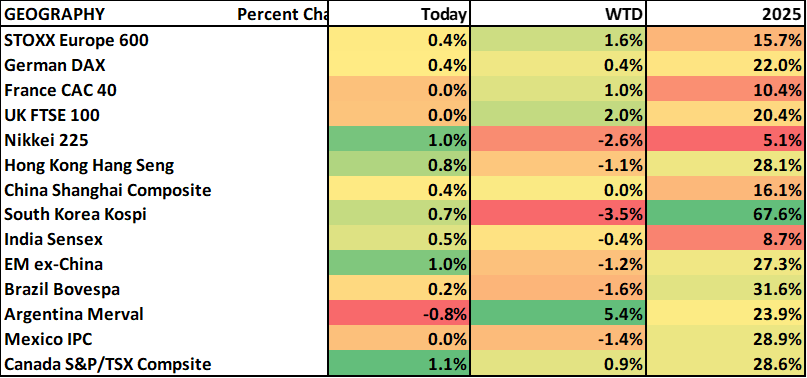
Commodities & Crypto - Mixed week with weakness in energy, agriculture and crypto while metals continued to move higher.
- Energy - Despite a bounce today oil and natural gas prices moved lower this week. Geopolitical headlines related to Ukraine and Venezuela continue to drive much of the day-to-day volatility in oil with fundamental traders continuing to focus on oversupply. ICE Brent is holding around $60 just above the YTD lows back to levels just before the start of the Ukraine war.
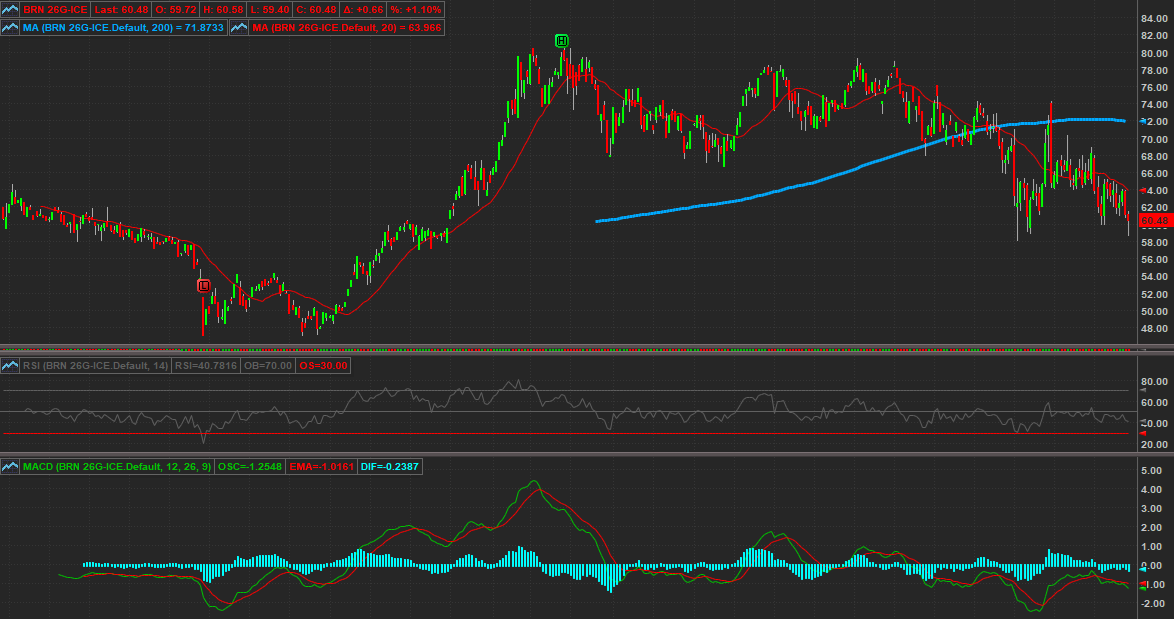
- Metals - Precious metals led to the upside. Platinum (see Weekly chart) and palladium were both up >10% as the commodity remains in deficit and helped by Ford headlines shifting focus away from EV’s. Silver was up nearly 10% hitting new highs. Gold underperformed closing only modestly higher.

- Copper - After consolidating for the last two weeks between 5.20 - 5.50 copper is trying to push through the upper end of the range, which could put the July highs ~$6 back in focus.
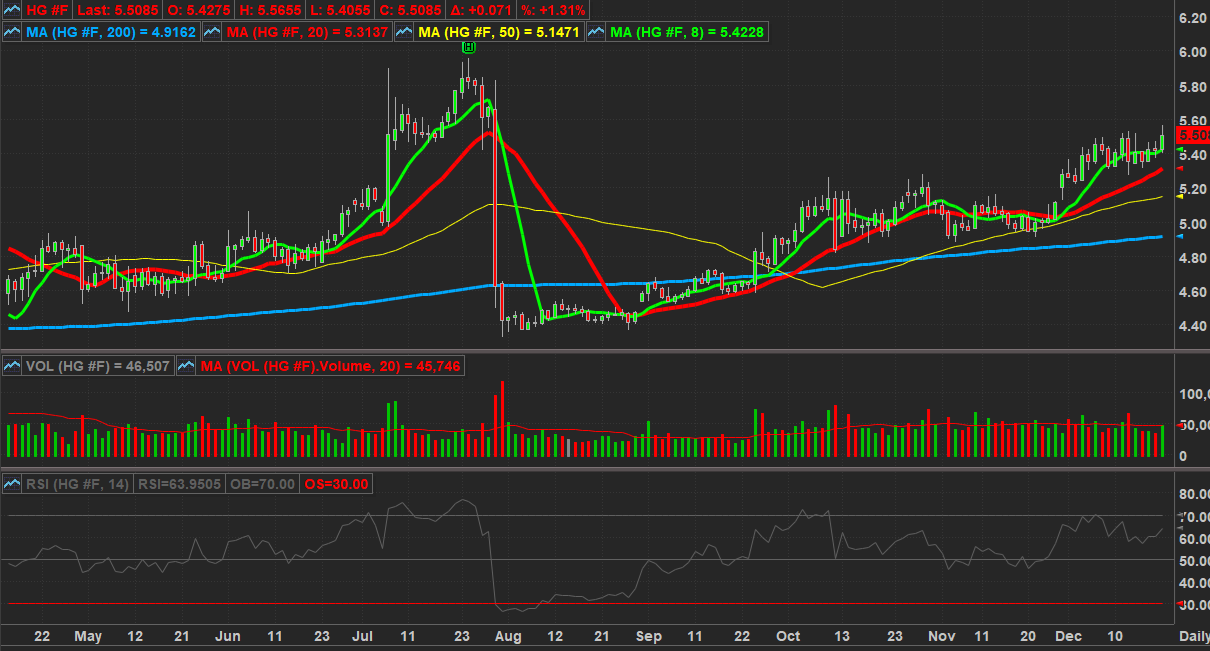
- Ag - was mixed with Soy underperforming falling ~3% filling the post China-optimism gap and retesting its 200d ma.
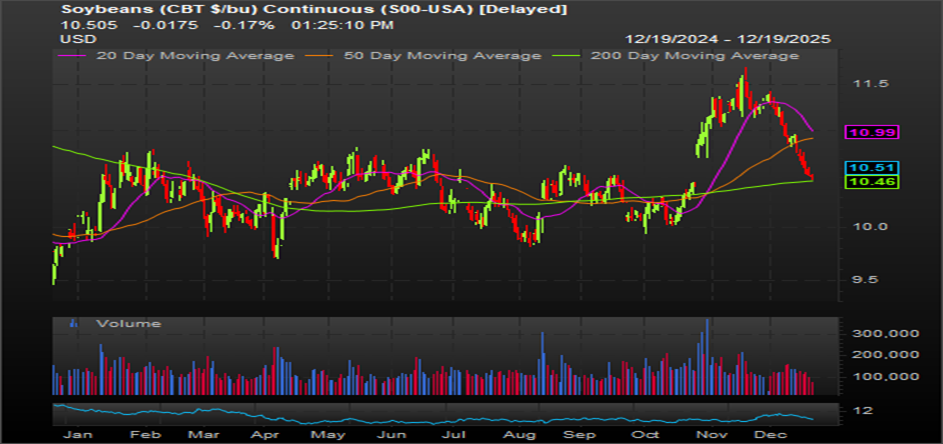
- Crypto - remains stuck in the mud. After moving sharply lower through mid November Bitcoin has been consolidating between 84k - 94k. It has been capped by its 20d ma which is now just under 90k, the first key level to watch for a sign of reversal.
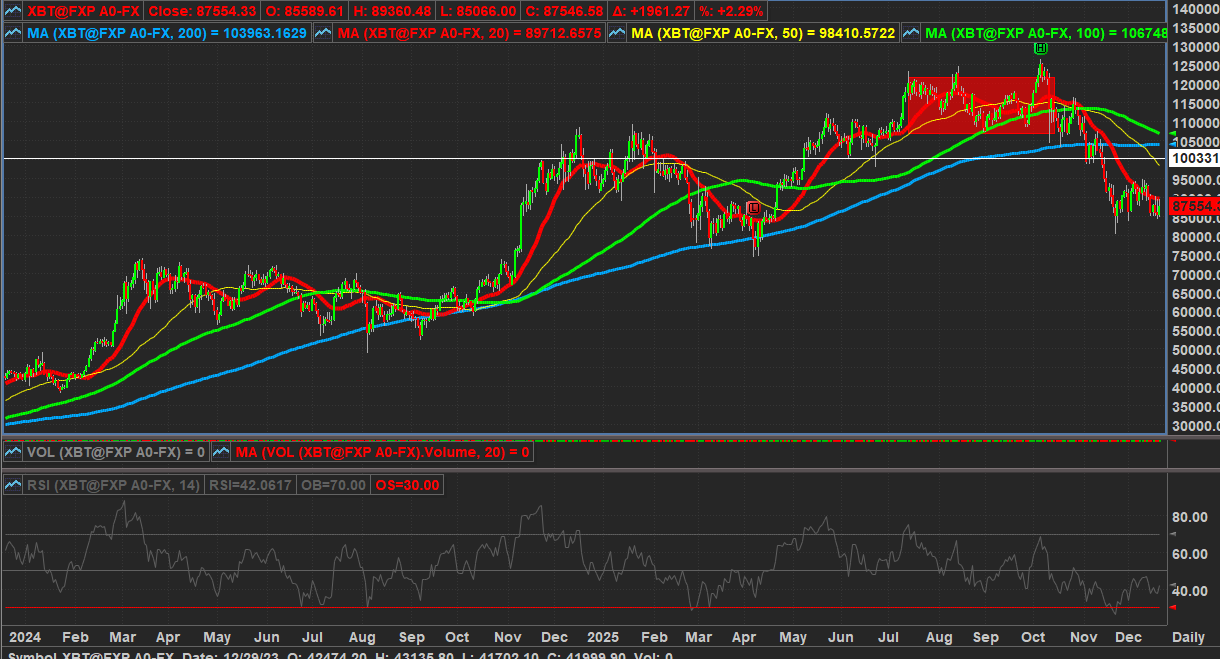
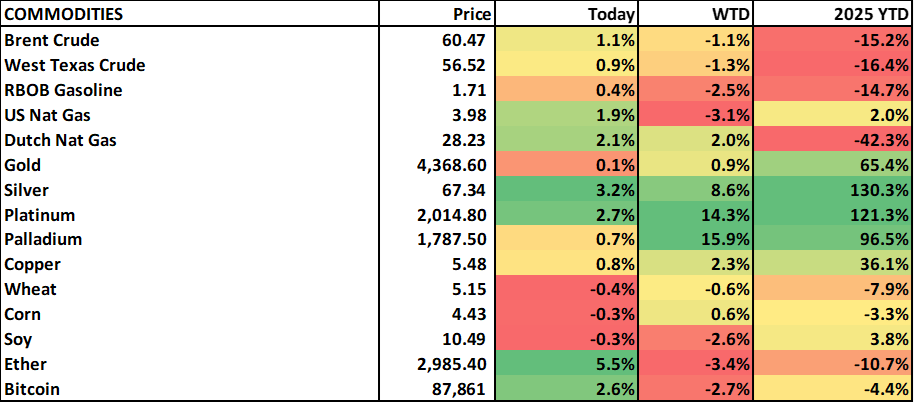
Economic Data
This week brought the long-delayed government jobs and inflation data. Last week Fed Chair Powell warned there would be distortions in the data which did seem to de-emphasize its importance in the Fed’s next rate decision. Taken at face value the data was dovish showing an increase in unemployment and moderation in inflation, but traders have viewed the data with a healthy dose of skepticism.

Let’s start with this week’s labor data. On Tuesday the BLS released the establishment survey for both October and November but did not collect the household survey data which is what is used to calculate the unemployment rate. October’s payrolls showed a sharp decline, falling 105K. Government jobs fell by 157K in the month with the BLS noting that part of this decline was from “federal employees who accepted a deferred resignation offer”. Headline November payrolls were slightly better than expected, up 64k with a moderation in federal job cuts to -5k. It is worth noting that private sector hiring was positive in both October (+52k) and November (+69k). Healthcare and social assistance was once again the biggest driver of job gains up ~64k in both months. Construction jobs were up 28k in November with nonresidential specialty contractors accounting for 19k, think datacenter construction. The unemployment rate moved up 4.6% from 4.4% but the caveat is that it was partially driven by an increase in the labor force participation rate which was ticked up to 62.5%. Over the two-month period the household survey showed 407k jobs added to the economy. Wage gains remained muted while the workweek ticked up to 34.3. President Trump took note of the data saying, “I could reduce Unemployment to 2% overnight by just hiring people into the Federal Government, even though those Jobs are not necessary”.
The weekly ADP report showed 16.25K jobs added per week for the four weeks ending Nov. 29, above the 4.75K jobs added in last week’s report. Initial jobless claims held steady ~224k while continuing claims increased from last week but were better than expected, just under 1.9ml. The claims data seems to have worked through the Thanksgiving distortions from a couple of weeks ago just in time for Christmas.
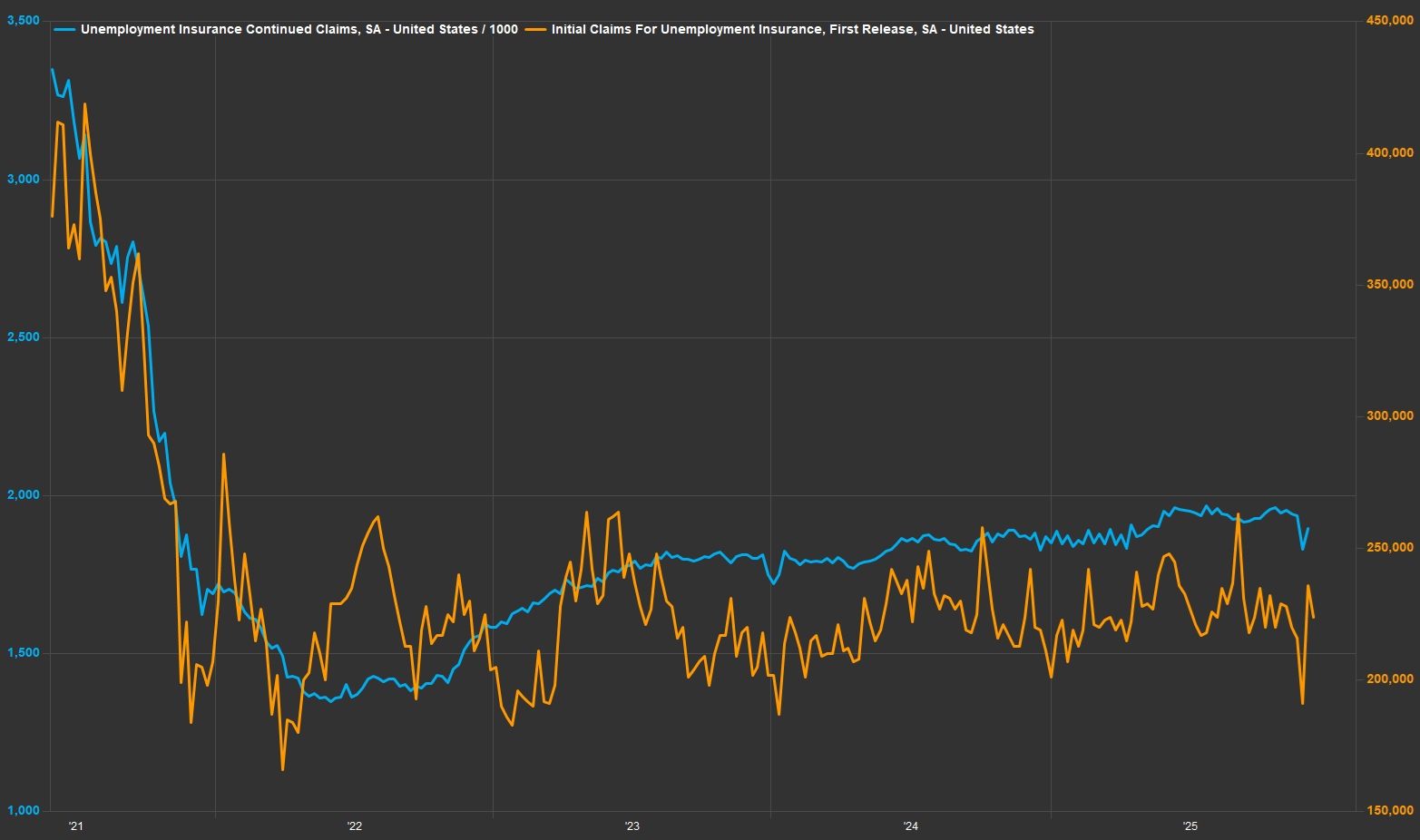
The CPI report made the labor market data look pristine. The BLS was unable to collect October data which will distort the data and the essentially blank table in the release was almost comical. With that caveat the “data” was better than expected with prices increasing 0.2% from September to November. So if you were to split that up it would be a 0.1% increase in each month down from around 0.3% in each month since June, which is a pretty steep decline. On an annual basis headline CPI was up 2.7% while core came in at 2.6%, both were down from 3% in September.
The other piece of government economic data this week was the retail sales. October retail sales were unchanged from September slightly below estimates. However, the control group, which feeds into GDP, came in twice the estimate at 0.8%. Moving to the private sector data S&P Global manufacturing and services PMIs came in below slightly below estimates at 51.8 and 52.9, respectively. The survey showed a softening in orders with hiring also stalling out. On the pricing front manufacturing input/output prices moderated but services picked up. That picture doesn’t really corroborate the CPI report.
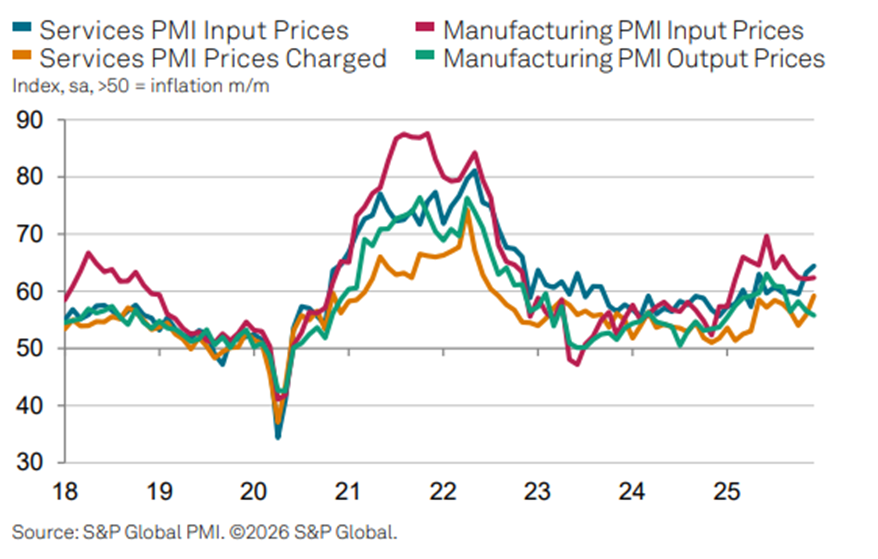
It’s hard to draw too much of a conclusion from this week’s data. This morning on a CNBC interview NY Fed President Williams suggested that the decline in CPI and increase in unemployment were both likely overstated by 0.1%. He said the data is broadly consistent with recent trends and reiterated that he believes the central bank is well positioned to see how the data evolves, that he believes the policy rate is still mildly restrictive and saying he doesn’t have a “sense of urgency” on changing policy.
Yields moved modestly lower this week down between 2-5bps across the curve.The USD index did bounce modestly this week primarily due to strength versus the Yen.


What's on Tap Next Week
Watch out for the Santa Claus rally (or lack thereof)- the last 5 trading days of this year and the first two days next year- an historically strong time for stocks. Economic data in the US for anyone who’s watching will include the 2nd estimate for Q3 GDP, Industrial Production, New and Existing Home Sales, weekly jobless claims and the weekly ADP employment report, as well as the minutes from the latest FOMC meeting. The Supreme Court’s ruling on the legality of the administration’s tariffs could potentially come before year-end, as can President Trump’s nomination of a new Fed Chair. And of course, there’s Christmas and New Years!
Calendar
- Weekend - China National People's Congress standing committee (Dec. 22-27), China LPRs
- Monday -
- Earnings Pre-Market: None
- Economic Data:
- US: Chicago Fed National Index
- Global: Italy PPI, Spain Trade Balance, UK Final GDP, Canada PPI
- Central Banks: ECB Survey of Monetary Analysts
- Speakers: None
- Auctions: US 3/6m, 2y, Korea 5y
- Earnings After-Market: None
- Tuesday -
- Earnings Pre-Market: None
- Economic data:
- US: GDP (2nd est), Durable Goods, ADP Weekly Jobs, Industrial Production, Conference Board Consumer Confidence, Richmond Fed Manuf.
- Global: Taiwan Export Orders, Europe New Car registrations, Canada GDP
- Central Banks:
- Fed Money Supply
- Australia RBA minutes
- Auctions: US 1/5y, Korea 20y
- Energy: API Oil Inventory (AMC)
- Earnings After-Market: None
- Wednesday - Christmas Eve! Equity and bond markets close early.
- Earnings Pre-Market: None
- Economic data:
- U.S: Initial Claims, Mortgage Applications
- Global: Japan BOJ minutes, Taiwan Industrial Production
- Central Banks:
- Speakers: None
- Auctions: US 4/8/17w, 7y
- Energy: None
- Earnings After-Market: None
- Thursday - Merry Christmas! Markets Closed (except Japan)
- Earnings: A Partridge in a Pear Tree
- Economic data:
- US: Two Turtledoves
- Global:
- Central Banks:
- Rate Decisions: Three French Hens
- Auctions: Four Calling Birds (in the original version it's "colly")
- Energy: FIVE GOLDEN RINGS
- Earnings After-Market: Six Geese-a-laying
- Friday - Eggnog Hangover. European markets closed
- Earnings Pre-Market: None
- Economic data
- US: None
- Global: Japan Industrial Production, Retail Sales, Tokyo CPI
- Central Banks
- Rate Decision: None
- Auctions: None
- CFTC COT
- Energy: Rig Count
- Earnings After-Market: None
Connect with NYSE
By submitting this form you hereby expressly grant permission to use the information included thereunder to contact you for the purposes of sending periodic updates about ICE and/or its affiliates. Certain indices mentioned above are administered by ICE Data Indices, LLC.
Your contact information will not be used for any purpose other than that for which your consent has been given. To learn more about our privacy policy, please click here.
© 2024 Intercontinental Exchange, Inc. All rights reserved. Intercontinental Exchange and ICE are trademarks of Intercontinental Exchange, Inc. or its affiliates. For more information regarding registered trademarks, limitations, restrictions, and other important information, please visit intercontinentalexchange.com/terms-of-use.
